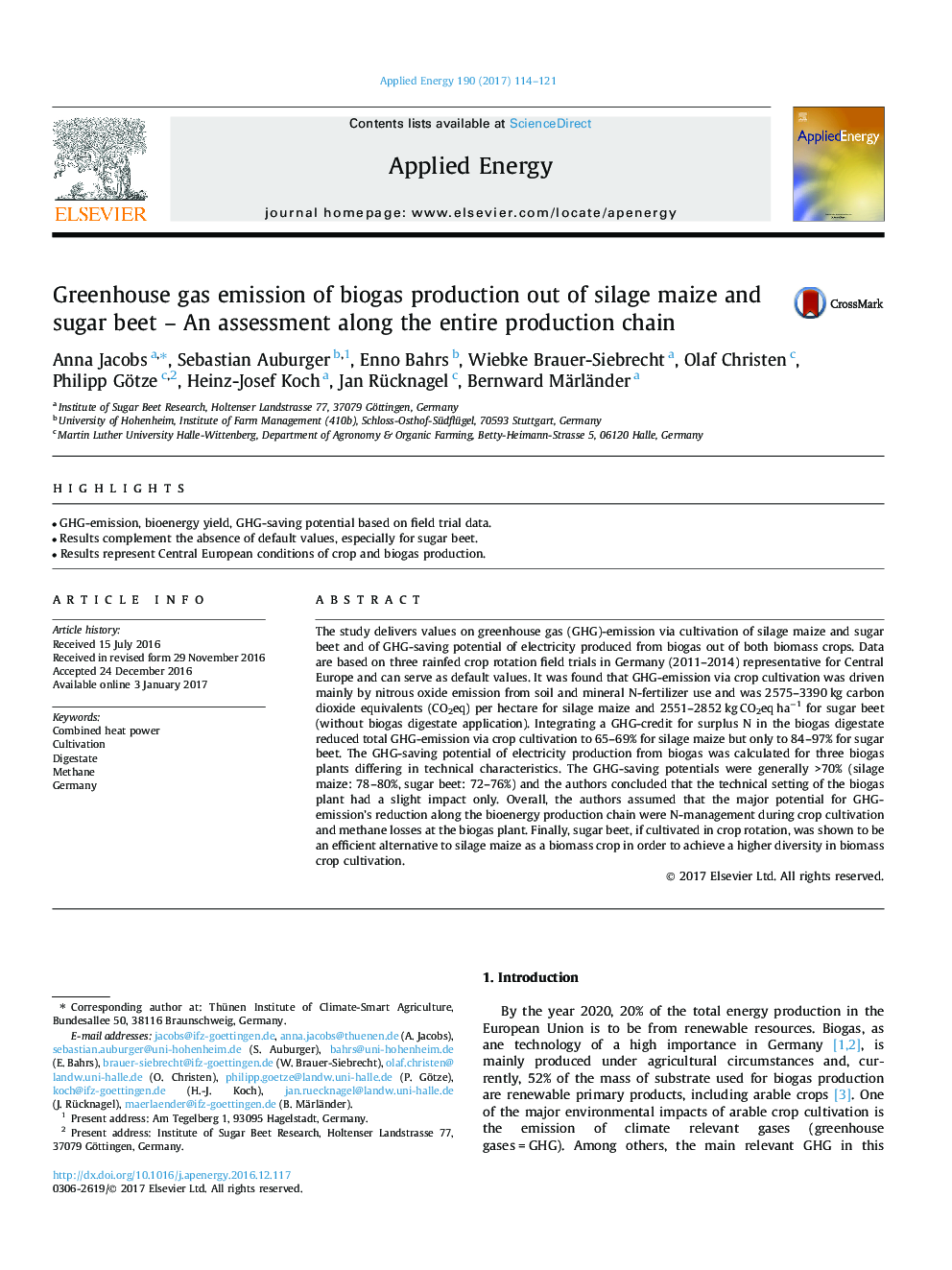| کد مقاله | کد نشریه | سال انتشار | مقاله انگلیسی | نسخه تمام متن |
|---|---|---|---|---|
| 6478454 | 1428100 | 2017 | 8 صفحه PDF | دانلود رایگان |
- GHG-emission, bioenergy yield, GHG-saving potential based on field trial data.
- Results complement the absence of default values, especially for sugar beet.
- Results represent Central European conditions of crop and biogas production.
The study delivers values on greenhouse gas (GHG)-emission via cultivation of silage maize and sugar beet and of GHG-saving potential of electricity produced from biogas out of both biomass crops. Data are based on three rainfed crop rotation field trials in Germany (2011-2014) representative for Central Europe and can serve as default values. It was found that GHG-emission via crop cultivation was driven mainly by nitrous oxide emission from soil and mineral N-fertilizer use and was 2575-3390 kg carbon dioxide equivalents (CO2eq) per hectare for silage maize and 2551-2852 kg CO2eq haâ1 for sugar beet (without biogas digestate application). Integrating a GHG-credit for surplus N in the biogas digestate reduced total GHG-emission via crop cultivation to 65-69% for silage maize but only to 84-97% for sugar beet. The GHG-saving potential of electricity production from biogas was calculated for three biogas plants differing in technical characteristics. The GHG-saving potentials were generally >70% (silage maize: 78-80%, sugar beet: 72-76%) and the authors concluded that the technical setting of the biogas plant had a slight impact only. Overall, the authors assumed that the major potential for GHG-emission's reduction along the bioenergy production chain were N-management during crop cultivation and methane losses at the biogas plant. Finally, sugar beet, if cultivated in crop rotation, was shown to be an efficient alternative to silage maize as a biomass crop in order to achieve a higher diversity in biomass crop cultivation.
Journal: Applied Energy - Volume 190, 15 March 2017, Pages 114-121
